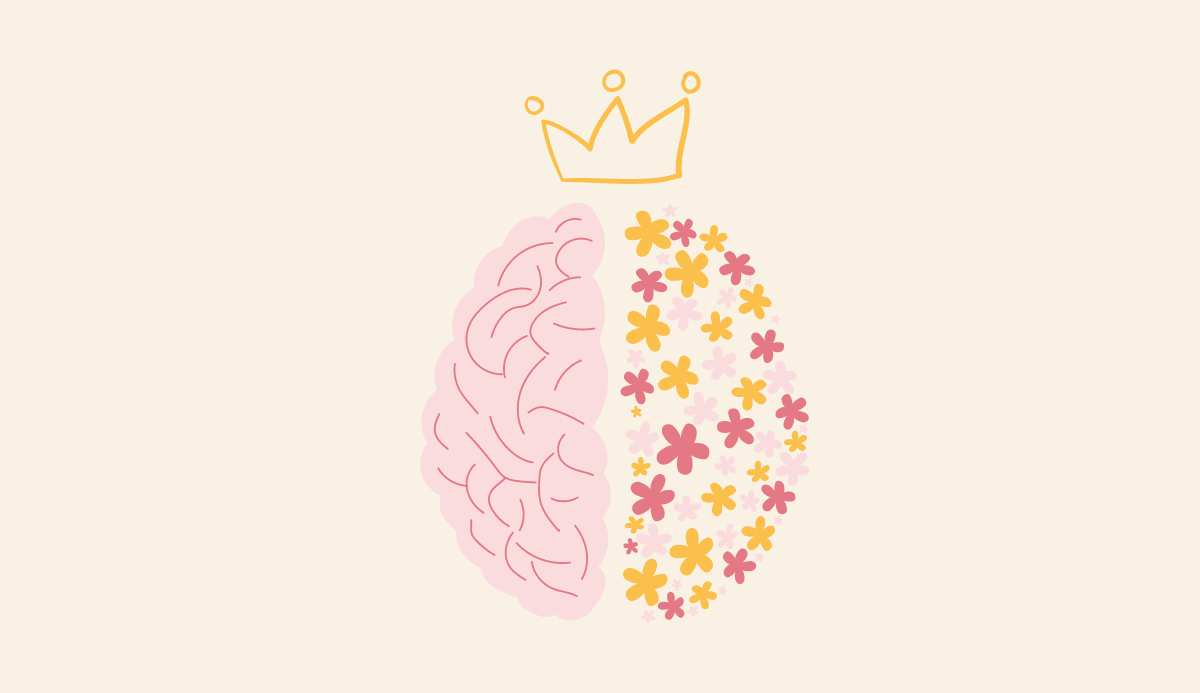
You know that feeling when you’re absolutely convinced *this* project will be different, that this time you’ll actually follow through? I’ve been there more times than I can count, standing in my craft room surrounded by half-finished scrapbooks, abandoned coding tutorials, and that novel I swore I’d finish by Christmas 2019. Here’s the thing though – there’s actually a neurological reason why your ADHD brain treats new projects like shiny treasure and completed ones like yesterday’s leftovers, and once you understand what’s happening…
Key Takeaways
- Your brain craves dopamine from new project ideas, making starting feel more rewarding than finishing existing work.
- Executive function overload occurs when juggling multiple tasks, creating mental paralysis that leads to project abandonment.
- Interest follows a predictable cliff pattern: hyperfocus phase, transition with decreasing motivation, then complete burnout and avoidance.
- Priority switching chaos happens as your brain constantly reassigns importance, creating task-switching whirlwinds without completion.
- Time blindness causes chronic underestimation of project duration, leading to overcommitment and abandoned half-finished work.
The Dopamine Chase: Why New Projects Feel Like Pure Magic
The moment you stumble across a new project idea, your brain practically lights up like a Christmas tree, and I’ve noticed this happens because your ADHD brain is desperately seeking that sweet dopamine hit that comes with novelty and possibility.
In my experience, it’s like being a kid in a candy store, except the candy is potential, and you want to taste everything at once. Your brain floods with excitement as you imagine the finished product, whether it’s launching that Etsy shop, starting a podcast, or reorganizing your entire closet with those fancy Container Store bins.
I’ve found that this initial rush feels intoxicating because it promises transformation, success, and that elusive sense of accomplishment, making you temporarily forget about the seven other projects currently gathering dust. Sometimes the most unconventional ideas capture our imagination precisely because their quirky uniqueness makes them feel like they could be the next Pet Rock or Potato Parcel success story.
Executive Function Overload: When Your Brain Can’t Keep Track

You know that feeling when you’re trying to juggle flaming torches while riding a unicycle on a tightrope, except the torches are your half-finished craft projects, work deadlines, and that novel you started three months ago? In my experience, this is what happens when your ADHD brain hits executive function overload, and suddenly you can’t recall which project was supposed to be your “main focus” this week, let alone why you thought starting a sourdough starter while reorganizing your entire closet was a brilliant Tuesday night plan.
I’ve noticed that when too many tasks compete for your brain’s limited processing power, everything starts to feel equally urgent and impossible, which is exactly why that beautiful watercolor set sits abandoned next to your unfinished vision board and those half-assembled IKEA shelves. The key is breaking overwhelming projects into manageable areas that feel achievable rather than paralyzing, so your brain can actually process what needs to happen next instead of shutting down completely.
Mental Task Traffic Jam
When your executive function system becomes overwhelmed, it’s like having fifteen browser tabs open while your mental processor starts making that concerning whirring sound—everything slows down, nothing loads properly, and you can’t recall what you were originally looking for. I’ve noticed this mental traffic jam happens when you’re juggling multiple unfinished projects, and your brain can’t prioritize which deserves attention first.
| What’s Happening | What You Experience |
|---|---|
| Task switching overload | Forgetting what you just started |
| Priority confusion | Everything feels equally urgent |
| Decision fatigue | Paralysis instead of progress |
In my experience, this creates a vicious cycle where you bounce between projects without making meaningful progress on any. Your brain’s traffic control system fundamentally shuts down, leaving you feeling scattered and unproductive despite constant motion.
Project Priority Switching Chaos
Behind this mental traffic jam lies an even more chaotic phenomenon that I’ve come to recognize as the “priority tornado”—where your brain frantically reassigns importance levels to projects minute by minute, creating a whirlwind of task-switching that leaves you dizzy and defeated.
In my experience, Monday’s “urgent” bathroom renovation suddenly becomes Tuesday’s back-burner project when you spot that half-finished scrapbook screaming for attention. I’ve noticed this happens because our ADHD brains can’t maintain consistent priority hierarchies, so we’re constantly recalibrating what matters most based on novelty, dopamine hits, or random environmental triggers.
One minute you’re convinced the garden makeover will transform your life, the next you’re abandoning it for that online course you forgot existed, leaving a trail of incomplete victories.
Cognitive Load Breaking Point
As if juggling multiple projects wasn’t challenging enough, there’s a critical moment when your executive function simply hits the wall—I’ve learned to recognize this breaking point as the exact instant when my brain stops being able to track what I’m supposed to be doing, where I put things, or even what day it is.
In my experience, this cognitive overload manifests as suddenly forgetting why you walked into a room while holding your car keys and a half-eaten sandwich, or staring blankly at your Notion dashboard wondering what any of those project titles actually mean.
I’ve noticed that once you reach this breaking point, attempting to force productivity becomes counterproductive—your brain desperately needs a complete reset, not another task added to the pile.
The Interest Cliff: Understanding ADHD Hyperfocus Burnout

How does someone go from spending fourteen hours straight researching the perfect bullet journal system, complete with color-coded pens and perfectly measured grids, to abandoning the entire project three days later when the novelty wears off? You’ve hit the interest cliff, where ADHD hyperfocus meets inevitable burnout. I’ve noticed this pattern happens when we exhaust our dopamine reserves through intense focus sessions, leaving nothing for project maintenance.
| Hyperfocus Phase | Transition Phase | Burnout Phase |
|---|---|---|
| 8+ hours daily focus | Decreasing interest | Complete avoidance |
| High dopamine reward | Mild resistance | Zero motivation |
| Obsessive research | Skipping sessions | Project abandonment |
In my experience, recognizing this cliff before you reach it means setting intentional limits during hyperfocus episodes, even when your brain screams for more research time. Breaking down these larger projects into smaller steps can help maintain momentum without triggering the complete burnout cycle that leads to abandonment.
Time Blindness and the Planning Fallacy Trap
Even if you managed to avoid the interest cliff, there’s another sneaky saboteur waiting to derail your projects: the toxic combination of time blindness and planning fallacy that makes you believe you can reorganize your entire closet in “just twenty minutes” this Saturday morning.
I’ve noticed this happens because your ADHD brain struggles to accurately estimate time, especially when dopamine’s involved. You’ll confidently block out thirty minutes for painting that accent wall, then find yourself three hours deep, covered in “Sage Whisper” paint, wondering where your day went.
In my experience, this creates a vicious cycle where you consistently underestimate project duration, overcommit your schedule, then abandon half-finished work when reality crashes into your optimistic timeline.
These time estimation struggles stem from differences in your executive functions, which affect how your brain processes planning and decision-making tasks.
Perfectionism vs. Procrastination: The ADHD Double Bind

You’re caught in what I call the perfectionist’s paradox, where you either need to execute something flawlessly or you can’t bring yourself to start it at all, and I’ve noticed this all-or-nothing thinking becomes the ultimate project killer for ADHD women.
In my experience, you’ll spend hours researching the “perfect” planner system, the ideal project management app, or the most efficient workflow, but then never actually use any of them because you’re terrified they won’t work exactly as planned.
This fear of imperfection creates a paralyzing loop where procrastination feels safer than attempting something that might turn out mediocre, even though that mediocre attempt would still move you closer to finishing than the perfect plan that never gets started.
The pattern of frequently starting projects but struggling to complete them is one of the most common challenges that women with ADHD face, creating a cycle of unfinished endeavors that can feel overwhelming and discouraging.
All-or-Nothing Thinking Trap
When perfectionism meets procrastination in the ADHD brain, it creates what I call the “all-or-nothing thinking trap,” and honestly, I’ve lived in this mental prison for years without even realizing it.
You tell yourself that if you can’t reorganize your entire closet perfectly, then why bother organizing one drawer, or if you can’t write the perfect blog post, then why write at all. I’ve noticed this trap makes you believe that imperfect action equals failure, so you choose inaction instead.
In my experience, you’re fundamentally holding yourself hostage with impossible standards, then wondering why nothing gets done. You’ve got to recognize that progress, even messy progress, beats perfect paralysis every single time.
Fear Paralyzes Progress
Although perfectionism and procrastination seem like opposite forces, I’ve discovered they’re actually twisted sisters in the ADHD brain, feeding off each other in a vicious cycle that keeps you frozen in place. Your perfectionist side whispers that everything must be flawless, while your procrastinating side delays starting because you’re terrified of not meeting those impossible standards. I’ve noticed this creates a paralyzing loop where you’re simultaneously rushing toward perfection and running away from potential failure.
Here’s how this double bind manifests:
- Analysis paralysis – You research endlessly instead of taking action, convincing yourself you need more information
- Revision obsession – You restart projects repeatedly, never satisfied with your “imperfect” initial attempts
- Deadline panic – You finally act only when external pressure overrides your internal fear system
Breaking the All-or-Nothing Mindset That Sabotages Progress
Three half-finished scarves, two abandoned garden beds, and one dusty guitar later, I’ve learned that perfectionism disguised as high standards becomes the ultimate project killer for ADHD women. You’re either creating a masterpiece or you’re failing completely, right? Wrong.
I’ve noticed this black-and-white thinking convinces us that messy progress isn’t real progress, so we quit when things get imperfect. In my experience, the most powerful shift happens when you redefine “good enough” as a victory, not a compromise.
That wonky first scarf? It still keeps you warm. The partially weeded garden? It’s still prettier than before. You’re not lowering standards—you’re choosing completion over perfection, and that’s where real momentum lives. This cycle of starting strong and abandoning projects often stems from difficulty prioritizing tasks and feeling constantly overwhelmed by the sheer number of responsibilities competing for our attention.
Practical Strategies for Actually Completing What You Start

Since abandoning my “someday I’ll organize my entire life” fantasy, I’ve discovered that finishing projects isn’t about willpower—it’s about designing systems that work with your ADHD brain instead of against it.
Here’s what actually moves the needle when I need to complete something:
- Break everything into stupidly small steps – I’m talking “open laptop” and “create new document” level granular, because starting feels less overwhelming when the first task takes thirty seconds.
- Set artificial deadlines with real consequences – I schedule coffee dates where I’ll share my progress, because external accountability creates the pressure my brain craves.
- Use the “just fifteen minutes” rule – I’ve noticed that once I start, momentum often carries me past the timer, but even if it doesn’t, I’ve made tangible progress.
- Schedule work during your hyperfocus sessions when your brain naturally wants to dive deep, and protect these golden windows by blocking out all distractions.
Conclusion
Your ADHD brain isn’t broken, it’s just wired differently, and I’ve learned that accepting this reality makes all the difference in actually finishing what you start. In my experience, you’ll always have that urge to chase shiny new projects, but now you’ve got the tools to work with your brain instead of against it, turning those scattered starts into genuine completions that’ll make you proud.





Pingback: 6 Signs Perfectionism Is Ruining Your Joy